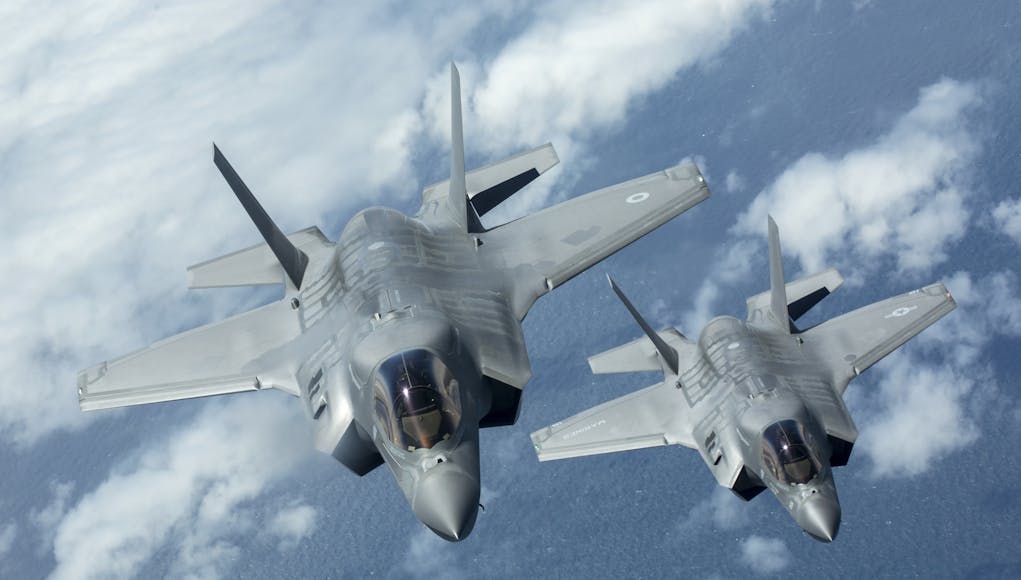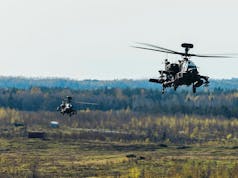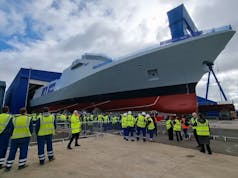In 2018, the UK’s first F-35B squadron will declare initial operational capability, we take a look at how they’ll get there.
It is understood that in order to train to meet operational requirements, a decision was made many years ago to integrate the training of the USMC and RAF together. About 10 years ago the UK’s Royal Air Force and Royal Navy began discussions about combining efforts on initial F-35B training with the United States Marine Corps.
Air Cdre Harv Smyth said:
“It started out as just a conversation about, ‘Wouldn’t it be a good idea to pool our resources? In the early years, we knew we’d both have a small number of jets and a small number of people training, so it just made sense to work together.”
These discussions eventually resulted in a ‘pooling implementation agreement’ between the RAF, Royal Navy and USMC.
The Royal Air Force and Royal Navy plan to operate 138 F-35B aircraft. Their training will take place at MCAS Beaufort, South Carolina, where British pilots and maintainers will be embedded with the U.S. Marine Corps and their fleet of F-35Bs. In February 2015, the RAF 17 Squadron, which is responsible for the operational test and evaluation of the UK’s first F-35s, was formally stood up at Edwards AFB, California.
Smyth claims British forces wouldn’t be able to reach that 2018 IOC goal without the partnership with the Marine Corps.
“The Marines at Beaufort have been phenomenally welcoming and accepting of us. Even when we have a conflict every once and again, we always find a way to work to a great solution that works well for both sides. We would not be having the success we’re having there if it weren’t for this partnership.”
Sqn Ldr Hugh Nichols said:
“It’s essentially three services melded together to form one unit at Beaufort, on any given day, you could have an RAF pilot hoping in a USMC jet with a Royal Navy maintainer there with the jet. Or a Marine hoping in a UK je or any combination, really.”
According to the US Marine Corps in a press release:
“The PIA has turned out to be a win-win for the Marine Corps and UK services. For one thing, they get to share knowledge and lessons learned when it comes to flying and maintaining the jets. In addition, sharing jets allows the both sides to be able to train more pilots, and quicker.
Of course eventually, the UK forces will make their way back in-country for training on their home soil. By early 2018, Sqn Ldr Nichol’s 617 Squadron will be formally stood up. Later that year, the first of the UK aircraft will ferry over to RAF Marham and then work towards IOC in December 2018.”
The F-35 features a significant amount of British developed components, in addition to 15% of every jet sold globally being built in Britain.
As the only Level 1 partner, the United Kingdom has garnered tremendous economic benefits from the F-35. British industry will build 15% of each of the more than 3,000 planned F-35s, in addition to a large volume of British developed aircraft systems including the electronic warfare suite.
The programme at peak will generate significant export revenue and GDP growth. The programme is projected to create and support more than 24,000 jobs across every region of the United Kingdom.














Its as though you do it, {put the British service men under the guise of thee murican neocon} deliberately.
Emphasising the word> CON.
Simply doing this gives ZERO strategic command to UK forces, you are therefore> TRAITORS OF THE HIGHEST ORDER.
KNOWING YOU’RE ENEMY~0